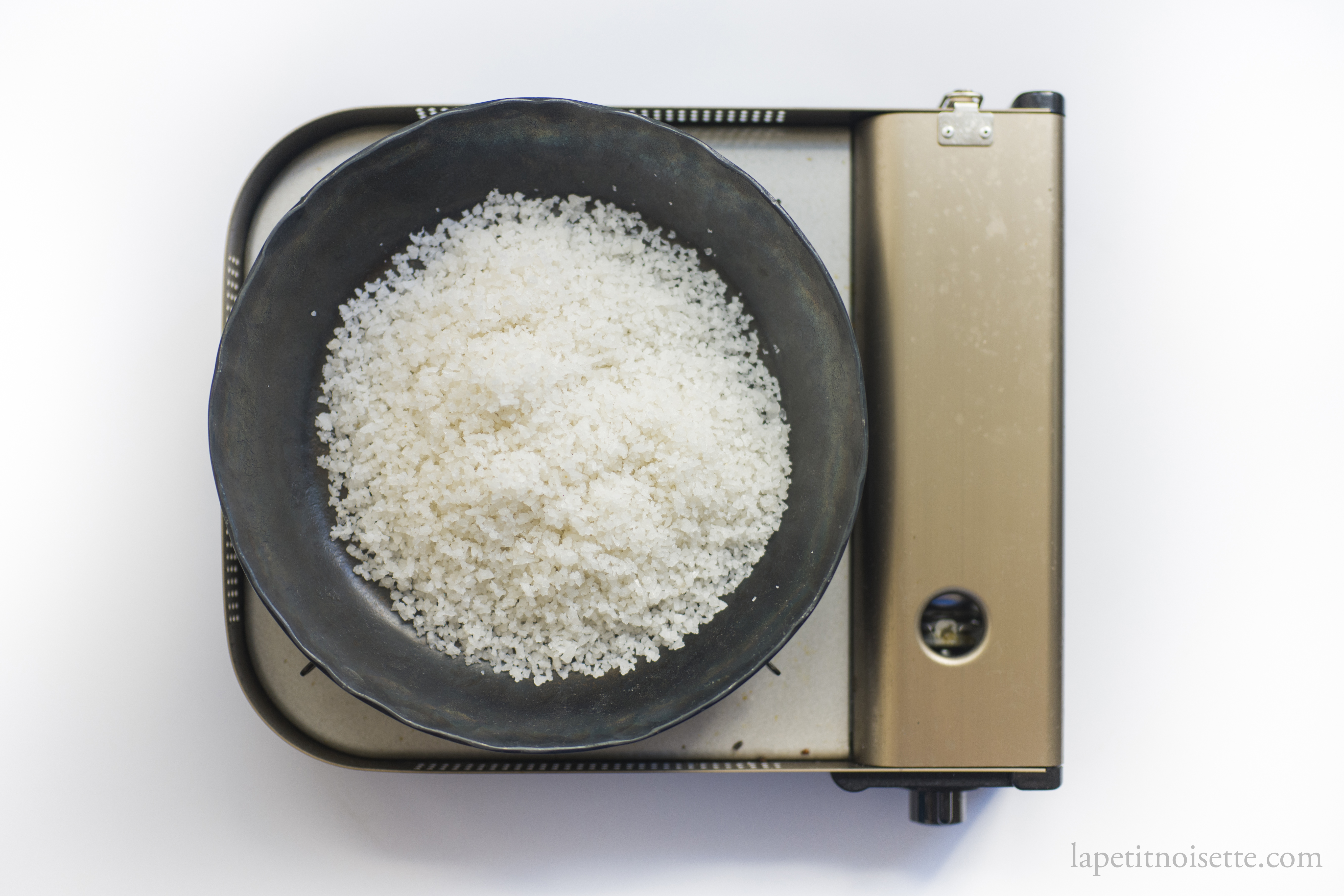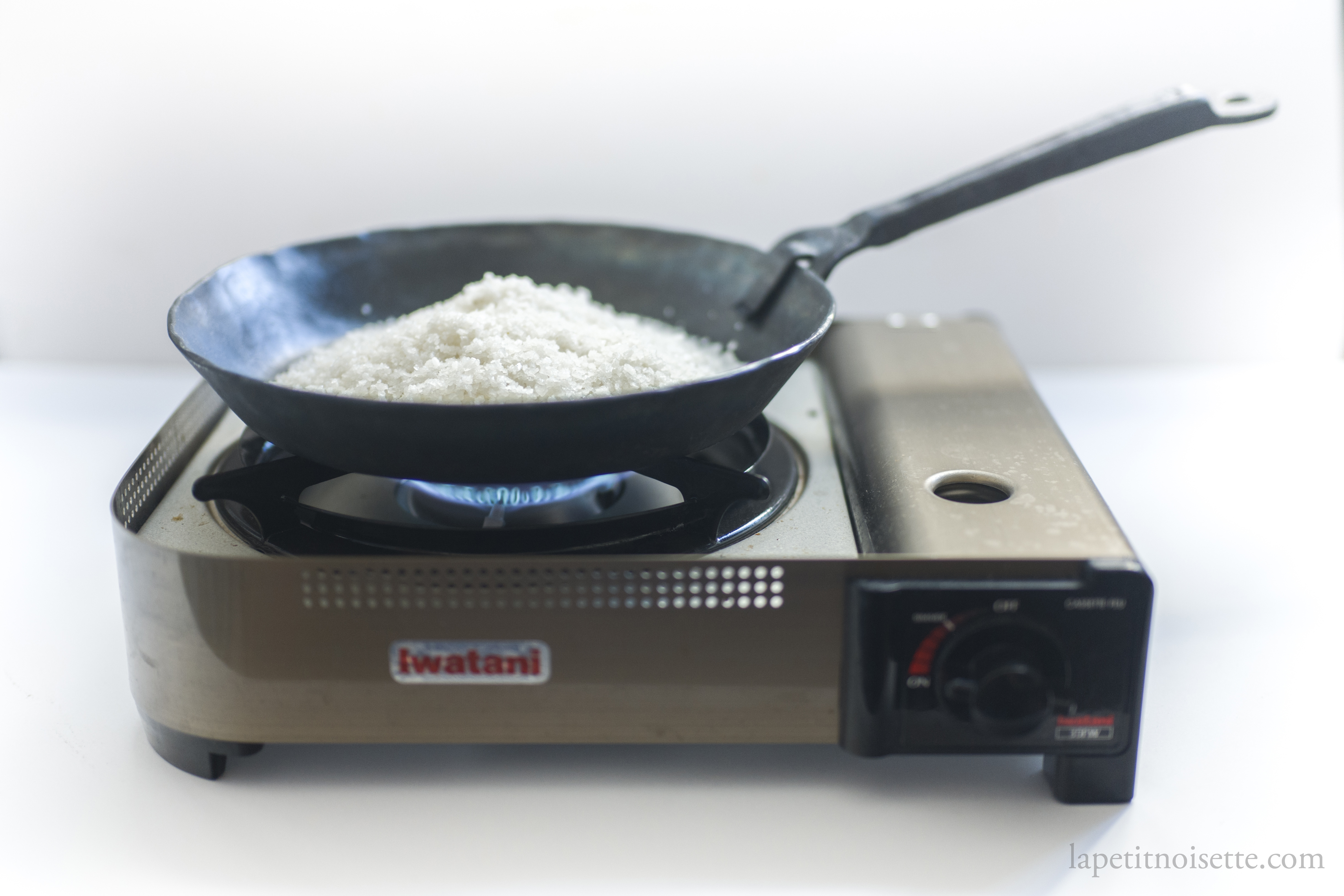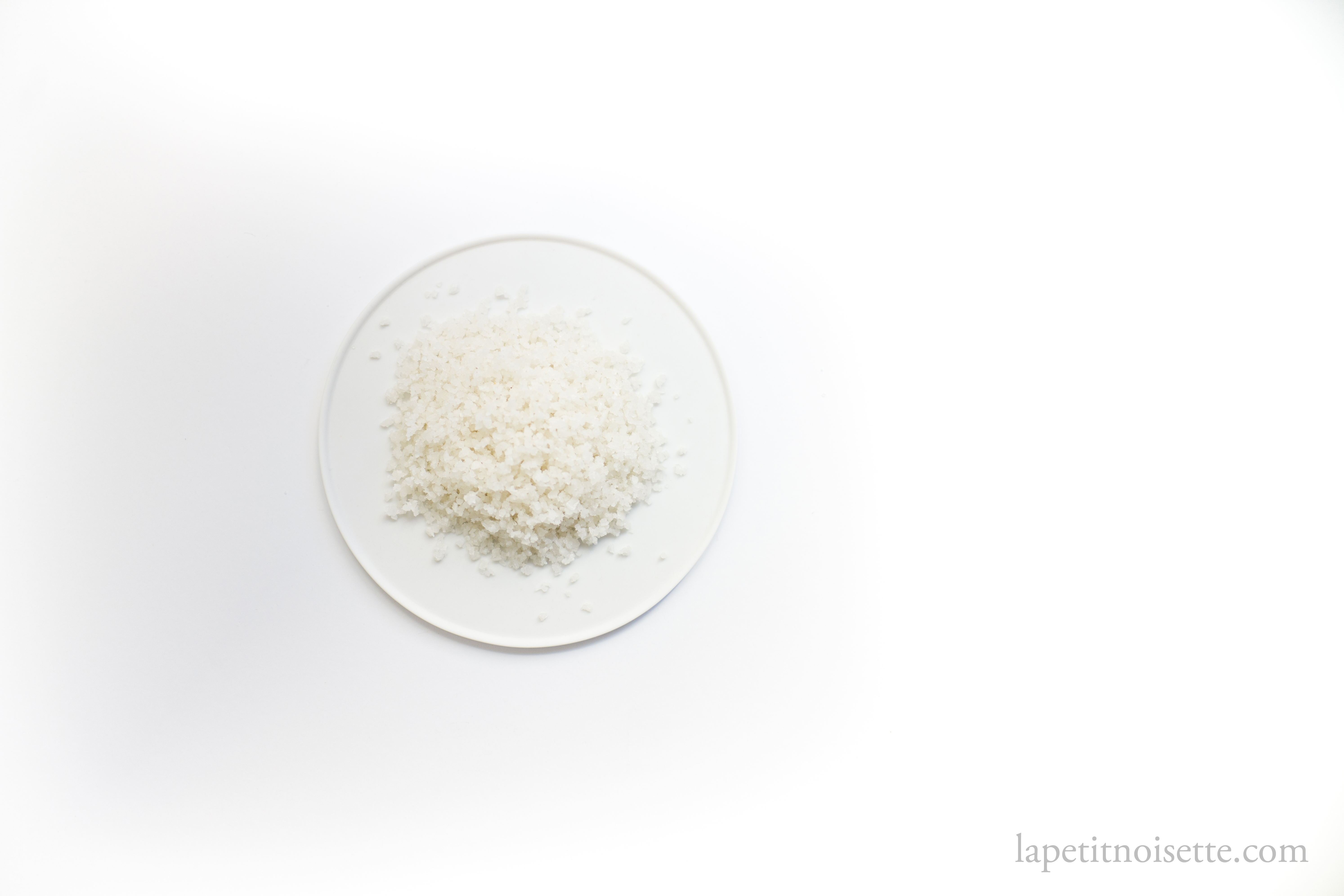
One of the most important routines we had at the sushi restaurant I worked at was drying out the salt in a pan over a fire. As you can imagine, we used quite a lot of salt everyday as each side of a fish fillet was salted for a period of time before being washed, wrapped and stored for service. Each morning, we would scope out the day’s salt from a huge bag into a small pot that we would then gently heat over a medium flame for around 5 to 10 minutes until completely dry, before allowing it to cool and then store away. This had to be done before the master arrived later in the morning.
The reasoning behind this that they told me was that it helps to concentrate the salt and evaporate any leftover moisture so that it has the maximum salting effect on the fish, without the additional water in the salt mixing with the fish. This is because the sea salt that we used at the restaurant was not a completely dry salt, but had a slightly damp texture to it.
This is characteristic of salt made in Japan that is traditionally dried using the sun (天日塩) and with no artificial heat source. It turns out that Japan has no rock-salt deposits and thus Japan’s sources of salt are either from the sea or by importing salt from overseas. A lot of the salt you’ll find in a Japanese supermarket would have been manufactured by boiling purified seawater. I’ve actually encountered versions of Sicilian salt from Italy and French sel de gris that have the same sandy wet texture.

Another reason given for going through the hassle of using such a salt was that it contained trace minerals such as potassium and calcium which gave the salt a more rounded taste. Buying fully dried salt would not have the same taste or quality as using sea salt, but in order to obtain the maximum potential of the sea salt we used, it needed to be dried further before use.
In my opinion, it’s really hard to quantify whether or not the use of sun-dried natural sea salt in our food made a noticeable difference or not. I doubt that a little additional moisture content on the salt would actually make a difference to the taste of fish and most people claim that the trace minerals in salt are in too low concentrations to actually have an effect on taste. However, I do believe in this step of the preparation process contributing to the overall mentality of ‘attention to every single detail’ that was so important to the running of the restaurant.
Nevertheless, at least it made the salt easier to sprinkle as it had the tendency to clump when moist. As the point of this site is to document the practices that I learned at the restaurant as accurately as possible, I thought that it’d still be important to write about.

How to remove excess moisture from sea salt
500g of sun dried sea salt
A heavy bottom pan
Make sure the pan is fully dry before adding the salt to it. Gently heat over medium heat, swirling the salt in the pan slowly to evenly heat the salt. Alternatively stir with a wooden spoon. Be careful not to use too high a heat as you may scorch the salt. Though technically it should be impossible to burn pure sodium chloride. The impurities in the sea salt might still be prone to burning so it’s better to be careful and gently heat the salt. Once you notice the salt to clump less and become dryer in texture, remove from heat and allow to cool before storing away. This usually takes around 5 to 10 minutes of drying but will vary depending on the salt you use. Caution: heated salt can get very hot and so it’ll be easy to burn yourself.
Thanks for this new piece Phil!
We find this kind of salt in France indeed. Its main appellation is ‘sel gris’ (grey salt). But you find it also under the names ‘gros sel gris’ (coarse grey salt) and ‘gros sel marin’ (coarse sea salt). It comes from the Atlantic coast and you recognize it by its characteristic grey color. ‘Sel gris’ is harvested from salt evaporation ponds where it is allowed to come into contact with the clay bottom of the salt pan before being raked, hence its grey color. It typically contains 13 percent residual moisture.
More here: https://en.wikipedia.org/wiki/Sel_gris
Interesting, again. Reminded me of the salt pans I saw in Gujarat in India, on the way to Porbander where Ghandi was born, and the making of which became a symbolic revolt against British rule. The flat white landscape was blinding in the sun and the small salt ponds shimmered in the afternoon heat.
Thanks.
First of all I want to thank you for all this informations about Japanese kitchen , and all the small details you wrote
To read all your contents amusing🙏